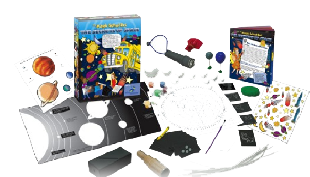SPACE ENVIRONMENT
The observation of the Sun and various phenomena which we see on its surface, and which moves through interplanetary space, helps us understand the causes and subsequent evolution of solar activity that affects Earth's space climate and environment. The climate and space environment of Earth are significantly determined by the impact of plasma, particle, and radioactive outputs from the Sun. Therefore, it is essential to understand the Sun, determine how predictable solar activity truly is, and develop the capability to forecast solar activity and the evolution of disturbances as they propagate to Earth.

Our star's output varies on many time scales: from explosive reconnection and convective turnover, to the 27-day solar rotation, to the 22-year solar magnetic cycle, and to even longer, irregular fluctuations, such as the 17th-century Maunder minimum. The variability is linked to the emergence of magnetic field from below the photosphere, its transport and destruction on the solar surface, and the eruption into the heliosphere of energy stored in the solar atmosphere as flares, shocks, and coronal mass ejections.
Longer-term changes that can affect Earth's climate include solar total and spectral irradiance. Like terrestrial weather, it is not yet clear how long in advance solar activity is predictable.
Continuous observations of the solar vector magnetic field and high-resolution observations of the atmosphere will be as critical for resolving this question as helioseismology will be for revealing the subsurface conditions.
Sunspots and their associated magnetic fields follow an 11-year activity cycle. This composite image shows ten magnetic maps of the Sun observed approximately one year apart, from one maximum of activity almost to the next. As activity fades, the large regions disappear and only small ones generated near the surface continue to emerge, creating a salt-and-pepper pattern of ephemeral magnetic regions that persists through time. As the next cycle of activity picks up, the magnetic polarities of the active regions that emerge from deep inside the Sun are reversed.
This means that although the sunspot number and the coronal activity have an eleven-year cycle, the full magnetic cycle is actually twenty-two years. Images: XX Peak telescope of the National Solar Observatory.


Ms. A.sir and her kids take you on a wild ride into the secrets of space with spectacular experiments.
Tour youngsters will assemble a working telescope, build a constellation box, construct a night-vision flashlight, design a solar system mobile, draw constellation cards, make a model of a solar eclipse, observe magic beads change colour, recreate the phases of the moon, and more!
This thrilling kit includes an interactive space poster with sheets of planet and star stickers. Seatbelts, everyone! Get ready to discover The Secrets of Space.